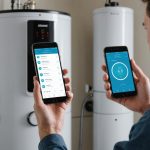VoIP (Voice over Internet Protocol) systems have become increasingly popular for their cost-efficiency and robust features. If you’re looking to configure a VoIP system using a Cisco SPA112 and a Synology NAS, you’re in the right place. This guide provides an in-depth, step-by-step tutorial to help you navigate through the setup process. Whether you’re a Whirlpool enthusiast or a forums addict, this article will walk you through each phase in a clear and professional manner.
VoIP technology enables voice communication over the internet, making it an affordable and flexible alternative to traditional phone lines. To set up a reliable VoIP system, you’ll need specific hardware and software components. This guide focuses on the Cisco SPA112 and Synology NAS—two highly reputable devices.
Additional reading : How to install and configure a firewall on a pfSense box for enhanced network security in a small business?
Why Use Cisco SPA112 and Synology NAS?
The Cisco SPA112 is an analog telephone adapter (ATA) that converts traditional phone signals into IP signals. On the other hand, a Synology NAS (Network Attached Storage) serves as a versatile server capable of hosting various applications, including VoIP servers.
User posts on popular platforms like whirlpool forums frequently praise this combination for its effectiveness and reliability. By following this guide, you’ll not only enhance your technical knowledge but also ensure a seamless VoIP experience.
Also to see : How to effectively manage power settings on a HP ZBook Firefly 15 G7 for extended battery life?
Step-by-Step Configuration Process
Setting up a VoIP system with these devices requires several steps, from initial setup to advanced configurations. Let’s delve into each phase.
Setting Up Your Synology NAS
First, you need to set up your Synology NAS to act as a DHCP server and host the necessary VoIP applications.
Initial Setup
- Unbox and Connect: Connect your Synology NAS to your network and power it up.
- Install DSM: Use a web browser to access Synology’s DiskStation Manager (DSM). Follow the on-screen instructions to install the latest DSM version.
- Create Admin Account: Set up an administrator account for added security.
Configuring the DHCP Server
- Open Control Panel: Navigate to Control Panel > Network > Network Interface.
- Create DHCP Server: Go to DHCP Server tab and click ‘Create.’ Follow the prompts to set up your DHCP server.
- Assign IP Range: Ensure the IP range does not conflict with other devices on your network.
By configuring the Synology NAS as a DHCP server, you lay the groundwork for consistent network management, which is crucial for VoIP functionality.
Configuring Cisco SPA112
Your next step involves setting up the Cisco SPA112 to work seamlessly with your Synology NAS.
Initial Setup
- Unbox and Connect: Hook up your Cisco SPA112 to your network and plug in a traditional analog phone.
- Access the Web Interface: Open a web browser and type in the IP address assigned to the Cisco SPA112 by your DHCP server.
- Log In: Use the default credentials to log in (usually admin/admin).
Advanced Configuration
- Navigate to Voice Settings: Go to the ‘Voice’ tab and click on ‘Line 1.’
- Enter Proxy and Registration Info: Input the details given by your VoIP provider.
- Set Codec Priorities: Prioritize codecs like G.711 for optimal voice quality.
Forums addict and enthusiast reference often recommend these settings for optimal performance.
Integrating Cisco SPA112 and Synology NAS
Integration involves ensuring that both devices communicate effectively and that the VoIP service runs smoothly.
Network Settings
- Static IPs: Assign static IP addresses to both the Cisco SPA112 and Synology NAS for consistent communication.
- Port Forwarding: Open necessary ports on your router to allow VoIP traffic. Common ports include 5060 for SIP and 10000-20000 for RTP.
- Quality of Service (QoS): Set up QoS on your router to prioritize VoIP traffic and minimize latency.
Security Measures
- Change Default Passwords: For both devices, to prevent unauthorized access.
- Firmware Updates: Regularly update the firmware to patch vulnerabilities. Ignoring updates can lead to critical vulnerabilities, including code execution exploits.
By following these steps, you ensure a secure and efficient integration between your devices.
Testing and Troubleshooting
Once everything is set up, it’s crucial to test the system and troubleshoot if necessary.
Initial Testing
- Dial Test Calls: Use your analog phone to make test calls. Ensure both inbound and outbound calls work smoothly.
- Voice Quality: Check for any issues like jitter, delay, or packet loss.
- Connectivity: Ensure that your devices maintain stable connections.
Advanced Troubleshooting
- Consult User Manuals: Refer to the manuals for both Cisco SPA112 and Synology NAS.
- Online Communities: Frequent whirlpool forums and other reference whrl sites for advice. User posts can offer practical solutions.
- Manufacturer Support: Reach out to Cisco or Synology’s support teams if issues persist.
A structured approach to testing and troubleshooting ensures your VoIP system functions seamlessly, minimizing downtime.
Ensuring Long-Term Success
Maintaining your VoIP system is just as important as setting it up.
Regular Maintenance
- Firmware Updates: As mentioned, keep both your Cisco SPA112 and Synology NAS updated.
- Backup Configurations: Regularly back up your configurations to prevent data loss.
- Monitor Network Performance: Use network monitoring tools to keep an eye on performance metrics.
Security Practices
- Email Notifications: Set up email notifications for critical alerts on your Synology NAS.
- Regular Audits: Conduct regular security audits to identify and address vulnerabilities.
- Update Passwords: Change passwords periodically to maintain security.
By following these maintenance steps, you ensure your VoIP system remains reliable and secure in the long run.
Configuring a VoIP system using a Cisco SPA112 and a Synology NAS may seem daunting at first, but following these detailed steps makes it manageable. From setting up your Synology NAS as a DHCP server to configuring your Cisco SPA112 and integrating both devices, each step ensures a robust and efficient VoIP system.
With careful attention to testing, troubleshooting, and regular maintenance, you’ll enjoy a reliable VoIP experience. Engaging with forums addicts on platforms like whirlpool forums can provide additional insights and solutions, making you a Whirlpool enthusiast in no time.
Remember, the key to a successful VoIP setup lies in meticulous configuration and ongoing maintenance. By adhering to these practices, you ensure long-term success and optimal performance for your VoIP system.











